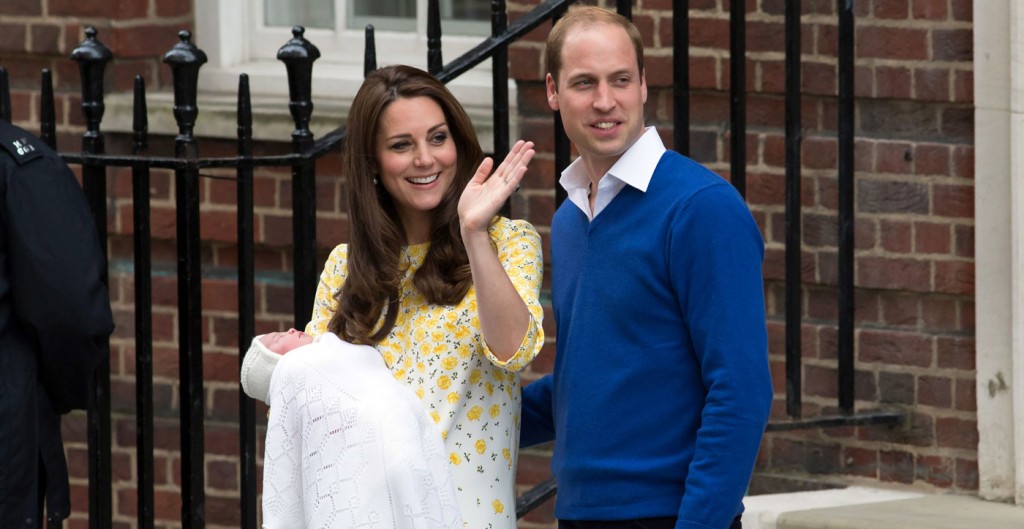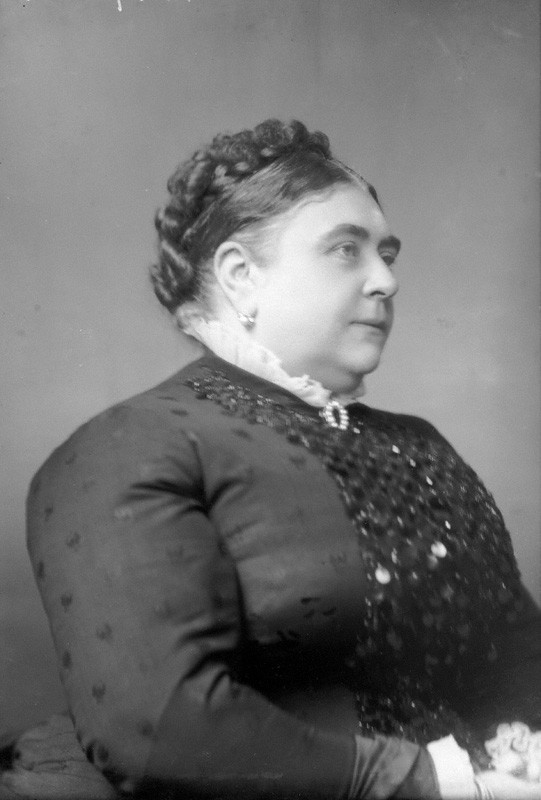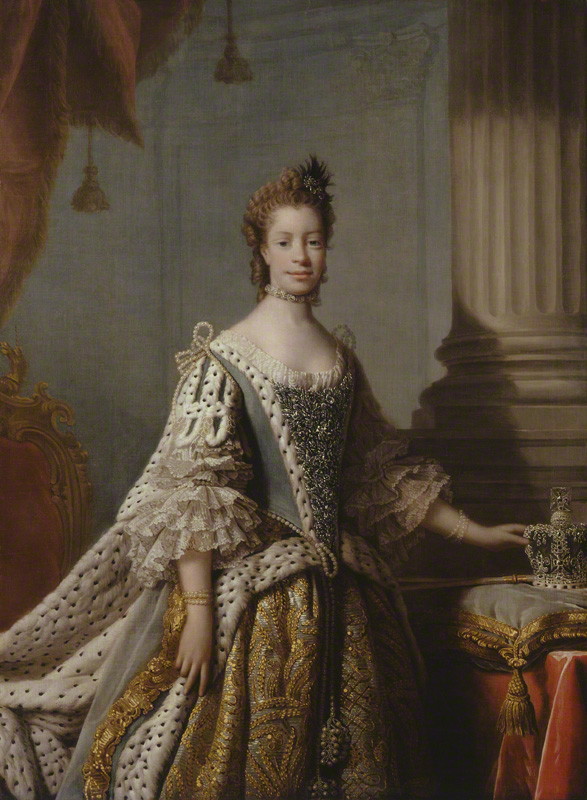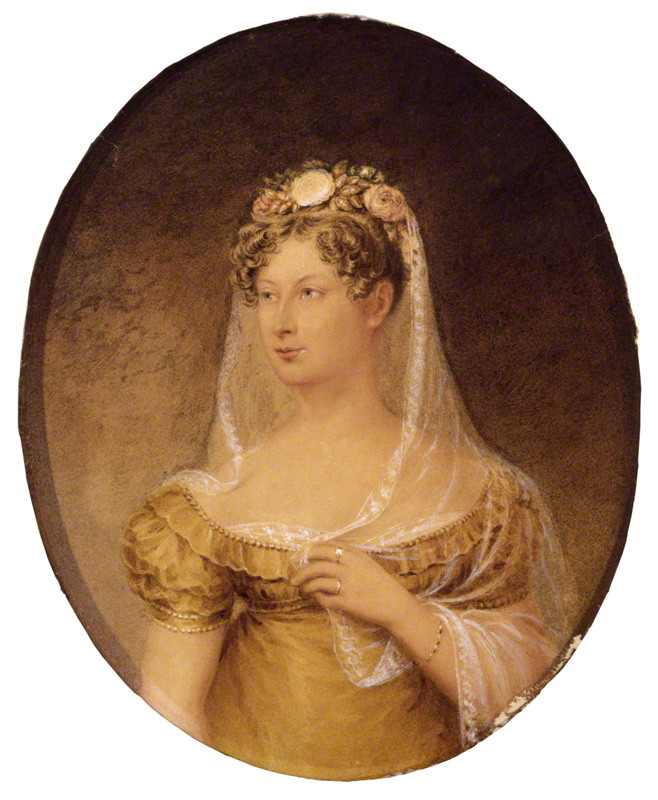by Susan Flantzer
© Unofficial Royalty 2021

Photo Credit – http://www.dukeandduchessofcambridge.org
The Duke and Duchess of Cambridge’s (now The Prince and Princess of Wales) second child, a daughter, was born on May 2, 2015. Her given names are Charlotte Elizabeth Diana and she is styled Her Royal Highness Princess Charlotte of Cambridge. (She is now styled Her Royal Highness Princess Charlotte of Wales.) Letters patent issued on December 31, 2012, by Queen Elizabeth II declared that all children of the Prince of Wales’s eldest son are princes or princesses with the style Royal Highness. As with other princes and princesses who are born to royal dukes, the children of the Duke of Cambridge take their territorial designation from their father’s title.

Princess Mary Adelaide, Duchess of Teck by Alexander Bassano, half-plate glass negative, circa 1888 NPG x96002 © National Portrait Gallery, London
The last-born Princess of Cambridge was Princess Mary Adelaide of Cambridge (1833-1897). Princess Mary Adelaide was the second daughter and the youngest of the three children of Prince Adolphus, Duke of Cambridge who was a son of King George III. Princess Mary Adelaide was the first cousin of Queen Victoria and the mother of Queen Mary, the wife of King George V. Therefore, she is the great great great great grandmother of Princess Charlotte of Cambridge. Princess Mary Adelaide weighed approximately 250 pounds and was affectionately known as “Fat Mary.” Her first cousin Queen Victoria wrote of her, “Her size is fearful. It is really a misfortune.” Princess Mary Adelaide, however, was high-spirited and full of life, and was adored by the Victorian public who called her “The People’s Princess.”

Sophia Charlotte of Mecklenburg-Strelitz, studio of Allan Ramsay, oil on canvas, (1761-1762) NPG 224 © National Portrait Gallery, London
Princess Charlotte’s first name, a French diminutive of Charles, is most likely a tribute to her paternal grandfather King Charles III and her maternal grandmother Carole Middleton, whose name comes from Carolus, the Latin form of Charles. Charlotte is also the middle name of the princess’ maternal aunt Pippa Middleton. However, there is a history of the name Charlotte in the British Royal Family. King James II and his second wife Mary of Modena had a daughter named Charlotte (1682), but she lived for only two months. Charlotte of Mecklenburg-Strelitz (1744-1818) was the wife of King George III. Queen Charlotte is noted for giving birth to 15 children with all but two surviving childhood. She was a patroness of the arts and an amateur botanist, who helped expand Kew Gardens in London.

Photo of Charlotte, Princess Royal; Credit – Wikipedia
King George III and Queen Charlotte named their eldest daughter Charlotte (1766-1828). In 1789, she was created Princess Royal, a style that can be awarded by a British monarch to his or her eldest daughter. The living conditions of King George III’s daughters came to be known as “the Nunnery.” None of the daughters was allowed to marry at the age when most princesses would marry. Charlotte was the only one of her sisters to escape the “the Nunnery” relatively early. At the age of 29, Charlotte married Hereditary Prince Friedrich of Württemberg, later King of Württemberg. The couple had one child, a stillborn daughter born in 1798.

Princess Charlotte Augusta of Wales, by Richard Woodman, watercolour, circa 1816 NPG 206 © National Portrait Gallery, London
Queen Charlotte also had two granddaughters named Charlotte. Princess Charlotte of Wales (1796-1817) was the only child of George, Prince of Wales, the future King George IV. Had Charlotte survived her grandfather King George III and her father King George IV, she would have become Queen of the United Kingdom. During her lifetime, Charlotte was second in the line of succession to the British throne after her father. On May 2, 1816, Charlotte married the handsome Prince Leopold of Saxe-Coburg-Saafeld (after 1826, Prince of Saxe-Coburg and Gotha, and in 1831, elected Leopold I, King of the Belgians).
On November 6, 1817, a great tragedy struck the British Royal Family. After a labor of over 50 hours, Charlotte delivered a stillborn son. Several hours later, twenty-one-year-old Princess Charlotte, the only child of George, Prince of Wales, and King George III’s only legitimate grandchild, died of postpartum hemorrhage. Charlotte was mourned by the British people in a manner similar to the mourning of Diana, Princess of Wales. She was buried in the Royal Tomb House at St. George’s Chapel at Windsor Castle with her stillborn son at her feet. Charlotte’s pregnancy and delivery had been grossly mismanaged and the doctor in charge later committed suicide. The death of Charlotte of Wales caused a succession crisis. See Unofficial Royalty: Death of Princess Charlotte of Wales in childbirth and its impact on the succession to the British throne.
Queen Charlotte’s other namesake granddaughter was Princess Charlotte of Clarence, the daughter of Prince William, Duke of Clarence, the future King William IV. Little Charlotte was born on March 27, 1819, and died the same day, a few hours after being baptized. Had Charlotte of Clarence lived, she would have been Queen instead of her cousin Victoria.

Queen Elizabeth II; Photo Credit – Wikipedia
Prince Charlotte’s second name is Elizabeth, and of course, it is in honor of her great-grandmother Queen Elizabeth II. Elizabeth is also the middle name of her mother, the Duchess of Cambridge, and her maternal grandmother, Carole Middleton. It was also the name of Princess Charlotte’s great great grandmother Queen Elizabeth The Queen Mother. The name of Elizabeth has been used over the years in the British Royal Family.
- Elizabeth of Rhuddlan, daughter of King Edward I (1282-1316)
- Elizabeth of York, daughter of King Edward IV and wife of King Henry VII (1466-1503)
- Elizabeth Tudor, daughter of King Henry VII (1492-1495)
- Elizabeth I, Queen of England, daughter of King Henry VIII and Anne Boleyn (1533-1603)
- Elizabeth Stuart, daughter of King James I (1596-1662)
- Elizabeth, daughter of King Charles I (1635-1650)
- Elizabeth Stuart, daughter of King James II (born and died 1678)
- Elizabeth, daughter of King George III (1770-1840)
- Elizabeth of Clarence, daughter of King William IV (1820-1821)
Princess Charlotte’s third name Diana is in honor of her late paternal grandmother Diana, Princess of Wales (1961-1997). Diana was born The Honourable (later Lady) Diana Frances Spencer, youngest daughter of John Spencer, Viscount Althorp (later 8th Earl Spencer) and his wife, formerly the Honourable Frances Burke Roche, at Park House, on the Queen’s Sandringham Estate. She married Charles, Prince of Wales on July 29, 1981, at St. Paul’s Cathedral in London. The Prince and Princess of Wales had two sons – Prince William and Prince Harry. The couple divorced in 1996 and Diana’s style became Diana, Princess of Wales. While she lost her HRH status, she remained, officially, a member of the Royal Family.
At 4 AM (Paris time) Sunday, August 31, 1997, Diana, Princess of Wales died in the hospital after being involved in a car crash that instantly killed Dodi Fayed and the driver of the car. Diana’s car was being chased by photographers on motorbikes at high speeds when the crash happened in a tunnel. Investigation of the accident also brought to light that the driver of the car was more than three times over the (French) alcohol limit.
The Prince of Wales, (now King Charles III) along with Diana’s two sisters, flew to Paris to accompany Diana’s coffin back to Britain. Draped with the Royal Standard, the coffin was taken to the Chapel Royal at St. James’ Palace. The funeral was held on Saturday, September 6, 1997, in Westminster Abbey, following a procession from Kensington Palace. After the service, Diana’s coffin was taken to Althorp, the ancestral home of the Earls Spencer, where she was buried privately on an island in the center of a lake on the grounds.
This article is the intellectual property of Unofficial Royalty and is NOT TO BE COPIED, EDITED, OR POSTED IN ANY FORM ON ANOTHER WEBSITE under any circumstances. It is permissible to use a link that directs to Unofficial Royalty.
